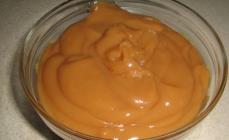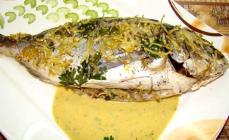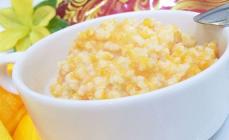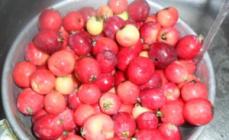Most home owners at least once in their lives received the food additive E 262 at home. There are no need to possess in chemistry for this. It is enough to "repay" soda.
The result of the reaction will be sodium acetate. Safely health compound has proven itself as.
Chemical substance In the international codification, it is listed under the index E 262 (in other documents a Writing E-262 may meet).
GOST 54626-2011 secured the definition of sodium acetates (international synonym Sodium Acetates).
Food sodium acetates are represented by two chemical species:
- Sodium acetate:
- Sodium acetatei;
- sodium acetate (chemical name);
- E 262i.
- Sodium diacetate:
- Sodium acetateii;
- sodium hydroacetate;
- sodium acetic acid, sour (chemical name);
- Sodium Hydrogen Acetate (Sodium DiaceTate);
- E 262ii.
German names: NatriumAcetat, Natrium Salz Der Essigsaure.
French: Acetate de Sodium, Sel de Sodium de l'Aside Acetique.
Type of substance
Food acetata sodium relate to the group artificial preservatives. By chemical composition represent sodium salts of acetic acid. Production raw materials are:
- acetic acid;
- natro caustic purified;
- soda calcined;
- caustic soda;
- sodium carbonate;
- sodium carbon dioxide.
The main method of obtaining dry distillation of wood raw materials with sodium salt of coalic acid. The technology of compounds of acetic acid (or its esters) with, hydrocarbonate or sodium hydroxide is popular.
Properties
Sodium acetate (E 262i)
Sodium diacetate (E 262II)
Packaging
According to GOST 54626-2011, for packaging food sodium Can be applied: 
- food bags made of polypropylene (used most often);
- boxes for confectionery from corrugated cardboard;
- paper multi-layer bags.
Mandatory requirement - the presence of an additional liner from durable polyethylene intended for food packaging.
Packaging food preservative to another safe container (barrels, cans, containers).
In addition to standard labeling, there must be a sign "Bear from moisture".Application
Sodium food acetates are one of the most sought-after additives in the production of food. The reason lies in the absence of toxic properties and low cost.
Food Preservative E 262 is permissible to apply without limitation of daily consumption.Formaldehyde should not be used in the production of food, as it is a very dangerous preservative. You can read more about it.
Main producers
 Sodium acetates to the domestic market are supplied: Ural industrial chemistry plant (city Magnitogorsk), plant. Ya. M. Sverdlova and Organiza LLC (both city of Dzerzhinsk Nizhny Novgorod region).
Sodium acetates to the domestic market are supplied: Ural industrial chemistry plant (city Magnitogorsk), plant. Ya. M. Sverdlova and Organiza LLC (both city of Dzerzhinsk Nizhny Novgorod region).
The large volume of products produces a Chinese company Fooding, which includes 35 chemical enterprises from several regions of the country.
The products of the German company W. Urlich GmbH, which has a 70-year-old development history differs high quality.
Approval that when entering the body food supplement E 262 turns into carcinogenic nitrites, does not withstand criticism.Sodium acetates are inside the cells of plants and living organisms. Are natural preservatives of all equal milk products As a direct result of bacterial fermentation. If you do not eat soda with spoons, do not drink vinegar litters, the food additive E 262 will be a useful and safe component of the products.
Sodium acetates CH3COONA, - sodium salt sodium salts. Registered as a food additive E-262..
Application of sodium acetates
Sodium acetate Used in textile production to neutralize waste sulfuric acid in wastewater and as a photoresist when using aniline dyes. Also used when taking the chromium salts (for rolling), and slows down the process of chloroprene vulcanization in the production of synthetic rubber.
Sodium acetate Known like a dietary supplement E-262.and applied as a preservative.
Being a salt of weak acid, in solution sodium acetate and acetic acid can be used as a buffer, to save relatively permanent pH. This is especially useful in biochemistry in pH-dependent reactions.
Sodium acetate Also used in everyday life as composite chemical heaters (English Hand Warmer), it is used as an integral part of the hot ice mixture (HOT ICE), with crystallization of sodium acetate, heat is highlighted - this Exothermic process). When the sodium acetate trihydrate is heated (having a melting point of 58 ° C) to 100 ° C (usually the container with it is placed in boiling water), it melts and goes into a acetate of sodium aqueous solution. When this solution is cooled by a sodium acetate, it forms a surprised solution of sodium acetate in water. This solution is perfectly transferred to room temperature without the formation of a solid phase, then by pressing the metal disk in the container, the crystallization center is formed, which, growing, causes the oversaturated solution to move back to the solid phase of the sodium acetate trihydrate. This process occurs at a significant heating of heat (exothermic reaction), while the process is allocated about 264-289 kJ / kg (heat transition heat).
Scope of technical sodium acetate:
Technical sodium acetic acid ( Sodium acetate Technical) is a trihydrate of a sodium salt of acetic acid, produced in the form of scales or pieces of incorrect shape.
The sodium acetic acid is used as an anti-corrosive additive for heavy, fine-grained and lightweight concrete, when the monolithic concrete and reinforced concrete structures are erected, the monolithic parts of the collection and monolithic structures, the joints of the joints, in the manufacture of prefabricated concrete and reinforced concrete products and structures in unheated buildings and on landfills, as well as When erecting structures from masonry in winter conditions at an outdoor temperature from plus 5 to minus 15 degrees Celsius.
Obtaining sodium acetates
Receive sodium acetate The interaction of NaOH or Na2CO3 with acetic acid or its esters, with a dry distillation of wood with Na2CO3, etc.
Application of sodium acetates E-262
Sodium acetate Apply in the production of dyes, soap, acetic anhydride, acetyl chloride, vinyl acetate, acetates SI, etc., as a diland, with dying of fabrics and tissue tissue, diuretic cp in medicine, polycondensation catalyst, components of acidic fixers in photographs, buffer r-mages, electrolytes in galvanotechnic. In medicine sodium acetates Applied as leaning agents (hyponatremia, metabolic acidosis)
Times when food has been tight standardization and control, unfortunately, passed. Today you have to be a little chemist, to feed your family not only tasty, but also useful and safely. So, studying the composition of food, one can notice the E262 additive, or sodium diacetate. What is this?
What is this substance?
E262 is an artificial preservative, which is a sodium salt of acetic acid. The substance is obtained by dry wood distillation with sodium salt of coalic acid. It has the appearance of a white or yellowish powder and has a slightly acidic smell. The substance is perfectly soluble in water and is not susceptible to burning. The formula of the sodium diacetate (C 4 H 7 O 4 Na) includes such substances that protruding with raw materials for its production:
- acetic acid;
- sodium hydroxide;
- calcined soda;
- caustic soda;
- carbon dioxide.
Application in the food industry
Sodium diacetate (E262) - one of the most common additives in food IndustrySince it is non-toxic, allowed to use in all countries of the world, has no daily consumption restrictions and has a low cost. As a preservative, an acidity regulator and flavoring, it is added to such products:
- vegetable and fruit conservation (to mitigate a sharp taste and smell of vinegar, which is added to the "spin");
- bakery products (for neutralizing sporing-forming bacteria, which often "live" in flour);
- snacks, broth cubes, sublimated soups, mayonnaise (for bright piquant taste and aroma).

Application in pharmacology
The second place for the use of sodium diacetate (after the food industry) is Pharmacology. This is where this additive is used:
- diuretic drugs;
- wound-healing and antiseptic liquids and ointments;
- necking agents;
- package and anti-inflammatory compositions for injection.
Other applications
Sodium diacetate is widely distributed in several spheres. Namely:
- livestock (as a preservative for fodder grain and some types of feed, as a means for increasing weight and outdoor cattle, such as means for increasing egg production poultry);
- concrete production (to increase the frost resistance of the building material);
- textile industry (to improve the quality of tissue coloring);
- leather production (for material drevilles before subsequent oak);
- manufacture of rubber and synthetic rubber (to slow down the vulcanization process);
- photo (as an image fixer when manifesting and printing);
- chemical industry (production of electrolytes, dyes, vinyl acetate and other substances);
- ecology (E262 is added to wastewater to neutralize the action of sulfuric acid).

Benefit and harm
Despite the fact that chemical additives with the prefix "E" produced a sharply negative attitude, this is not entirely true. It is believed that the body of a healthy person can recycle any amount of E262 without negative consequences. In addition, the sodium diacetate has undeniable beneficial features: Disinfectant and bactericidal.
Despite the fact that the additive is permitted to use, do not forget that this substance refers to moderately dangerous products of the third class. The damage diacetate sodium is still possible if they use the substance in an excessive amount or to inhale its pairs. It can provoke such health problems:
- conjunctivitis;
- skin irritation and rash;
- light allergic reactions;
- irritation of the upper respiratory tract;
- violation of metabolism.
People who have increased sensitivity to acetic acid, it is worth strictly limiting or eliminating E262 consumption at all.

Conclusion
It is good or bad, but chemical additives are an integral part of the modern food industry. In this regard, many rumors and myths are distributed about these substances. In particular, it is the opinion that sodium diacetate turns into a carcinogen when entering the body. But this statement is rooted incorrectly. The fact is that acetates are contained in the cells of all living organisms and plants. Thus, if you do not use E262 spoons or all days, do not breathe it with pairs, this additive can be considered completely safe.
). In the food industry, the E262 additive is used as a preservative, an acidity regulator and flavoring.
According to its physical properties, sodium acetates are a colorless crystalline substance with a low-rise smell of acetic acid. Sodium acetates obtained for industrial purposes may have a shade from light yellow to brown depending on the impurities present. E262 additive has low solubility in ether and alcohols, but at the same time high solubility in aqueous solutions. Sodium Sodium Acetates and have low toxicity.
The food industry uses two types of E262 additives:
- E262i - Sodium acetate, ( Sodium Acetate.) With a chemical formula of substance: C 2 H 3 NaO 2;
- E262II - sodium diacetate or sodium hydroacetate Sodium diacetate., Sodium Hydrogen Acetate.) With the chemical formula C 4 H 7 NaO 4 H 2 O.
On an industrial scale, sodium acetates are obtained in several ways, for example by reaction of carbonates or sodium hydroxides with acetic acid.
- 2SH 3 Soam + Na 2 CO 3 → 2CH 3 Coona + H 2 O + CO 2
The cinema sodium is often found in nature. It is one of the components of animals and plants. Sodium acetate is present along with natural acids in most fruits. In addition, it is a product of bacterial fermentation and, therefore, is present in all milk products.
The use of food additive E262 does not lead to any side effects, because Acetates are a conventional component of all organism cells. E262 additives should be avoided only by a small percentage of people having allergies to vinegar. It is believed that the average body can process the E262 supplement in any quantity, so the maximum daily dose of sodium acetates in Russia is not established.
In the food industry, the E262 additive is used when preserving vegetables and fruits to mitigate the taste of acetic acid. In addition, adding sodium acetate along with calcium acetate in a small amount into flour, manufacturers are protected from potato disease bacteria ( Bacillus Mesenttericus.) His bakery products. Also, the E262 additive is used as an aroma in the production of chips, giving products slightly acetic taste and aroma.
In addition to the food industry, sodium acetates are widely used:
- in medicine - is part of a number of drugs, used as a diuretic applied in the production of chemical heating;
- in construction - as a additive that improves the contamination properties of concrete;
- in chemistry - to obtain various chemical compounds, such as acetic anhydride;
- In photography, galvanotechnic;
- in textile production when the tissue is dyeing, tossing the skins.
The E262 food additive is included in the list of allowed food additives in most countries of the world, including in the Russian Federation and Ukraine.
SynonymsAcetic sodium, sodium salt of acetic; englishsodium Acetate, Sodium Salt of Acetic; it.NatriumAcetat, Natri-Umsalz Der Essigsaure; fr.. acetate de Sodium, Sel de Sodium de l'Acide Acetique.
Cas.№ 127-09-3 (sodium acetate b / c); 6161-90-4 (sodium acetate trigid-rant).
Empirical formulaC 2 H 3 O 2 Na (sodium acetate b / c); C 2 H 3 O 2 Na ■ ZN 2 O (sodium acetate trihydrate).
Like. m.82.03 (sodium acetate b / c); 136.08 (sodium acetate trihydrate).
Organoleptic properties
Physiochemical propertiesChoir. Six in water; poorly suited. in alcohol, ether, hygroscopic. T pl 324 ° C (anhydrous), 58 ° C (trihydrate).
Natural source Cm.Acetic.
Obtaining
Metabolism and toxicityCm.ACETIC ACID.
Hygienic normsChipboard is not limited. Hazards on GN-98: PDC in the air of the working area of \u200b\u200b10 mg / m 3, hazard class 4. Codex: allowed for mayonnaise, broths and GMP soups. In the Russian Federation allowed in fruits and vegetables canned, bread, others food products According to in an amount according to individually or in combination with other acetates (p. 3.1.18.3.1.20.3.2.23, SanPine 2.3.2.1293-03).
ApplicationOf all the salts of acetic acid in the food industry, the use of practically only sodium diacetate.
Other applications: Sodium acetate is used in medicine as a diuretic, as for feed, drives with tissue and tissue tissue, in photography, in galvanotechnics.
(2 ) Sodium diacetate
Technological functionsPreservative, acidity regulator.
SynonymsEnglish. sodium DiaceTate; nem.. NatriumDiaCetat; fr.. diaceTate de sodium.
Cas.№ 126-96-5.
Empirical formulaC 4 H 7 O 4 Na.
Like. m.142,09.
Organoleptic propertiesColorless crystals with a weak odor of acetic acid.
Physiochemical propertiesT pl 328-330 ° C; pH 1% P-PA 4.5-5. Choir. Six in water.
Natural sourceCm.ACETIC ACID.
ObtainingThe interaction of sodium carbonate or caustic natra with acetic acid or its esters, with dry distillation of wood with sodium carbonate, etc.
Metabolism and toxicityCm.ACETIC ACID.
Hygienic normsChipboard is not limited. In the Russian Federation, it is allowed in fruits and vegetables canned, bread, other food products according to in the amount of individual or in combination with other acetates (p.p. 3.1.18,3.1.20.3.2.23 SanPine 2.3.2.1293-03) .
ApplicationOf all acetic acid salts, the application finds almost only sodium diacetate. It softens the sour taste of acetic acid in various products, is used in soles-smelting. Sodium diacetate and calcium acetate are also used to protect bread from the so-called "potato disease" - damage, the pathogens of which are bacteria of the type of Bacillus Mesenttericus. The concentration of diacetate is 0.2-0.4% of the mass of flour. As a means of prevention of packaged bread from mold diacetate sodium is not used.






